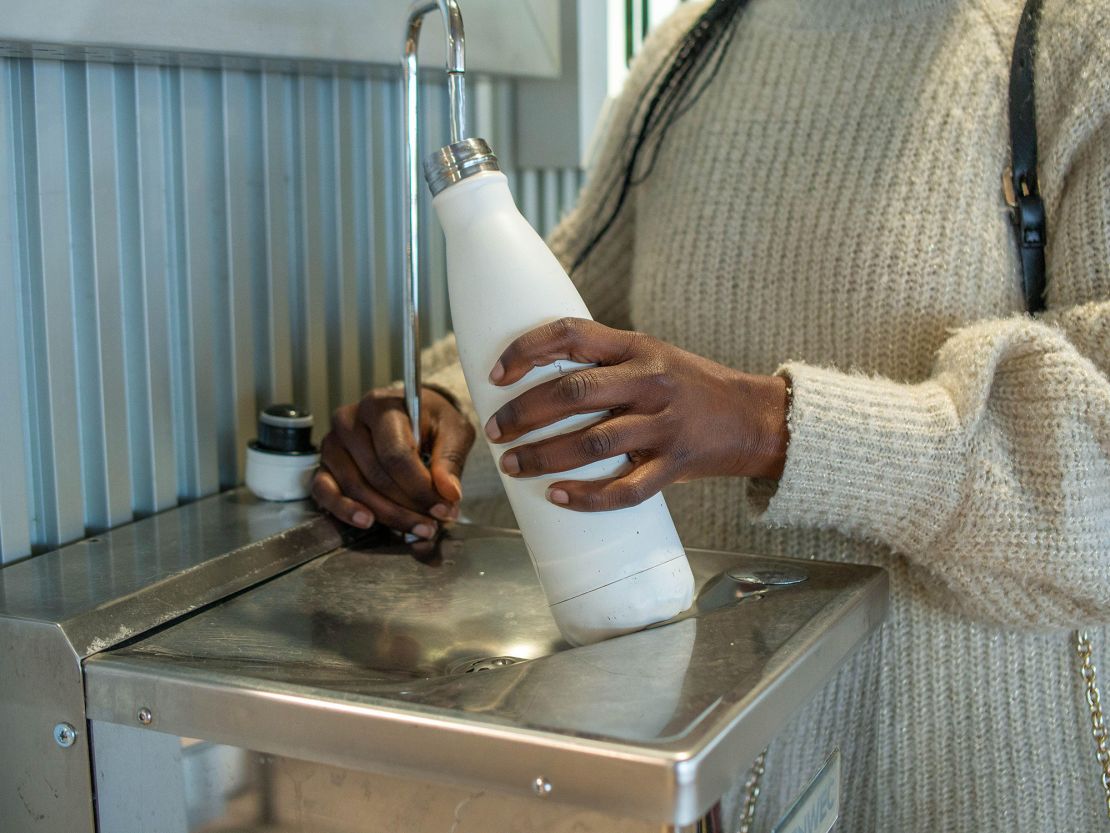Editor’s Note: Sign up for Unlocking the World, CNN Travel’s weekly newsletter. Get news about destinations, plus the latest in aviation, food and drink, and where to stay.
As millions of Americans take to the skies over the Thanksgiving holiday this week, some will likely be searching for easy travel hacks to help make their journeys a little less painful.
Among the many flying tips making the rounds in recent years on TikTok, this one continues to pop up: how to get a full bottle of water through a US airport security checkpoint.
Well, it turns out the answer is simple — freeze it, first.
No, you wouldn’t be breaking any rules. The US Transportation Security Administration (TSA) is actually on board with this one.
“Frozen liquid items are allowed through the checkpoint as long as they are frozen solid when presented for screening,” a TSA spokesperson confirmed to CNN by email.
“If frozen liquid items are partially melted, slushy or have any liquid at the bottom of the container, they must meet 3-1-1 liquids requirements,” they added, referring to the TSA’s rule that allows each passenger to bring liquids, gels and aerosols in containers that are less than 3.4 ounces or 100 milliliters and can all fit into a single quart-sized bag.
What to do if your frozen bottle starts to melt? Drink it before you put your items into the security bin.
Just remember: this rule will also apply if you decide to fly home after family Thanksgiving with a bag of leftovers. Most would agree that slurping back a mouthful of partially melted gravy isn’t going to be a pleasant pre-boarding experience.
And there are of course exceptions to the 3-1-1 rule — the TSA allows larger amounts of medically necessary liquids, gels and aerosols in carry-on luggage, and these need to be declared to officers at the security checkpoint for inspection.
Ultimately, the best advice is to not pack any foods or frozen liquid items into your carry-on luggage that you would be upset to throw away.
“The final decision rests with the TSA officer on whether an item is allowed through the checkpoint,” reads the TSA website.
What’s the point?

Not surprisingly, some travelers just can’t warm up to the thought of bringing frozen bottles through security.
Many who commented on popular TikTok videos and blogs about the hack said they didn’t see the point, given you can just take an empty bottle through security and fill it up for free at the widely available water dispensers most airports now offer in departure halls.
Others couldn’t imagine why someone would go to all that trouble just to avoid paying for a bottle of water on the other side, regardless of the inflated prices. A few even pointed out that the ice might melt too slowly for a passenger to even have time to drink it if they’re on a short flight.
Meanwhile, some travelers expressed surprise that this hack wasn’t common knowledge; the TSA has issued regular reminders on its social media platforms.
Among the frequent flyers who feel the idea has its merits is aviation blogger John E. DiScala, aka Johnny Jet, who has traveled over 100,000 miles a year since 1995 and visited over 100 countries.
“While I’ve never personally brought a frozen water bottle through security, there are times when this travel hack makes sense,” he told CNN.
“Yes, you can always fill your bottle up post-security, which is what I always do. But sometimes, you can’t find a refilling station, there’s a long line or you just don’t have enough time to do it before boarding. In these instances, it would be nice to already have your ice-cold water with you.”
He also pointed to recent aviation disruptions as a reason to pop a bottle into the freezer before your flight.
“Water from a refilling station is fine but in extreme heat, nothing will beat ice-cold water,” said DiScala.
“This past summer, there were many stories about passengers stuck on delayed flights, sitting on the tarmac, who I’m sure wished they had some cold water to drink to stay hydrated.”
‘It’s always smart to be prepared’
When asked if some travelers are motivated to bring frozen bottles through US airport security checkpoints simply for the thrill of outsmarting “the man,” DiScala agreed that may be part of it, but stresses this trick really could come in handy.
“Sure, people love travel hacks that make them feel like they’re beating the system — like shoving an extra carry-on bag’s worth of clothes into a travel pillow — but this one is not only easy and inexpensive but it could really help to keep you safe, hydrated and healthy,” he said.
“I never like to be at the mercy of the flight attendants for water so it’s always smart to be prepared and have your own.”
Travelers outside of the US should check what the policy is in the country they’re departing from before going to the trouble of freezing their water bottles. Canada, for instance, isn’t quite so chill.
Though the Canadian Air Transport Security Authority (CATSA) doesn’t specifically mention frozen water bottles on its website, it does note that gel and ice packs are subject to 100 ml liquid restrictions, as are non-solid foods, with some exceptions.
“Frozen liquids, such as ice, are permitted in quantities of 100 ml (3.4 oz) or less,” says a post on the CATSA website.
“Food over 100 ml that is normally a liquid or gel but has been frozen solid will not be allowed to pass through security in your carry-on. In order for a food to be considered a solid, it must be solid at room temperature.”





